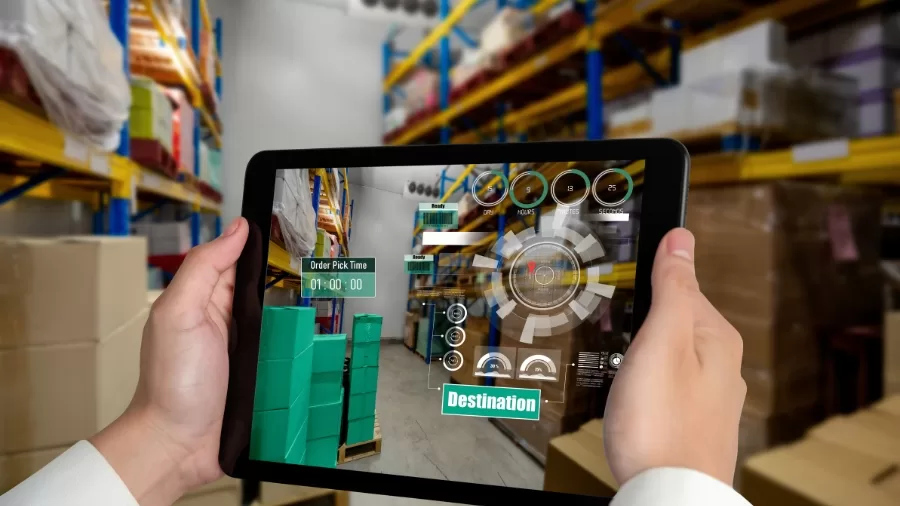Business
Smart Warehouses: A Game-Changer in Logistics and Supply Chain Innovation

- An automated warehouse is when inventory management, order fulfilment, and shipping processes come smoothly with AI, IoT, and robotics applications.
- Functional when it comes to increased workforce efficiency as well as minimised commission error with operational costs saved throughout the entire operation of the warehouse.
- Advancements in the supply chain include a vision for smart warehouses that will take the concepts of 5G, blockchain, and autonomous robots one step forward.
Supply logistics management keeps changing. The term “smart warehouse” seems to be becoming popular in logistics and supply chain management. It becomes a game-changer when the organisation needs optimised operations, improved efficiencies, and minimised expenses. This definition of a smart warehouse must rely on technology but does not define what is meant by a smart warehouse or how it works.
Key Technologies that Run Smart Warehouses
A smart warehouse is a technologically advanced facility that automates and streamlines inventory management, order fulfilment, and shipping procedures. It uses current technology that the Internet of Things incorporates, such as artificial intelligence (AI), robotics, and machine learning, to run a smooth and effective cost in operation for the fastest and most efficient operation.
From smart warehouses, remarkable haste arises from the first implementation outcome within a firm. It entails supercharging a warehouse’s operational efficiency, substantially reducing human error, hence delivering products accurately and quicker to clients. Smart warehouses subtly help firms be competitive in an industry such as real-time data assimilation and automated procedures.
How Smart Warehouses Work
Consequently, smart warehouses centre around cutting-edge technology and its vital attention, which serves to bring together some systems to optimise the various segments of the warehouse. Note that they mostly rely on robotics and automation in modern operational concept frameworks and designs concerning smart warehouses. Robotic systems like AGVs and AMRs do the transporting work of the goods across and end-to-end movement inside the warehouse. Such robots work with the workforce to carry out activities like selecting, sorting, and packaging stuff, leaving very few tasks requiring manual labour and increasing efficacy overall, among other things.
They also focus on smart warehouses making use of IoT devices such as sensors and RFID tags. These wireless sensors include real-time monitoring capabilities for stock levels, equipment operations, and environmental conditions in the warehouse. The data is used to optimise inventory management, forecast maintenance requirements, and achieve optimal use of space.
AI algorithms help in making decisions like finding the best storage sites, forecasting demand in the future, and even finding the best delivery locations. In comparing machine learning to traditional systems, the learning experience from data leads to its ongoing improvement, thus achieving better results.
Cloud-based technology solutions offer warehouse managers the benefit of accessing real-time data from anywhere, making inventory monitoring, performance tracking, and data-driven decision-making easier. Cloud solutions also allow for scalability to adapt to changing demand in the warehouse for certain items.
The strong point behind smart warehousing is a strong warehouse management system (WMS). It provides inventory control and tracking, warehouse and process optimisation of order picking, and then movement of items across the plant. This will help warehouse managers benefit from informed decision-making since WMS solutions, combined with other technologies, translate to cost reduction and improved customer satisfaction.
Step-By-Step Operation of Smart Warehouses
Automation in a smart warehouse gets married to real-time data analysis, which is believed to be possible by optimising every part of the supply chain. Storage levels in the WMS are updated as actuals are provided per inventory received through RFID-tagged IoT sensors.
Quite quickly, robots are selecting the most effective location for stock of the merchandise, waiting to be placed. They are resorted by the decision-making system that turns on and off at that time and then reracks them in coordination with supervision personnel while they are converted to other usage.
After an order is placed, the most efficient order-picking process is advised by AI computations. Very frequently, industrial robots or drones are used to fetch the products from the shelves in ‘goods-to-person’ picking. This leads to faster and more accurate work, thereby reducing human errors and speeding up order fulfilment.
Once the product has been picked, it will be automatically packaged by robotic systems while the system decides the most appropriate method of shipping it, as per the required delivery period and cost. It brings about a great improvement in packing methods in a smart warehouse using AI and ensures good shipping practices.
Throughout the entire process, data collection is carried out and applied in real-time analysis. These data give an insight into identifying inefficiencies as well as predicting future needs and assured optimisation parameters guarantee its top performance.
Benefits of Smart Warehouses
With smarter warehouse technologies, businesses benefit from the following key points: more or less instant order fulfilment from advanced automation, which shaves time off picking, packing, and shipping activities; decreases manual labour; and enables perhaps the greatest saving to be realised in terms of optimising shop floor space.” AI-run devices enrich observation, reduce space errors, and ensure the orders get filled correctly by sensors.
Growing businesses can expand to greater numbers of robots, storage solutions, and cloud-based systems that make it possible for a smart warehouse to scale with them; the consequences of real data being received on time would therefore be more efficient decision-making from the warehouse manager, enabling productivity and customer satisfaction to become more effective.
The Future of a Smart Warehouse
Smart warehouse technology is on the rise, with similar advancements to be anticipated in the future. The advances in 5G networks offer faster and more reliable communications between devices, paving the way for more intelligent decision-making through machine learning and artificial intelligence (AI). Moreover, blockchain technology may be a good resource for improved transparency and traceability in supply chain management.
Shortly, we are going to see more sophisticated robots, drones, and perhaps fully autonomous vehicles being used in warehouses, making sure that efficiency is further promoted and human operators are no longer employed in doing repetitive tasks. Ongoing advances in these technologies will make smart warehousing an even more important factor in shaping the logistics and supply chain landscape.
Conclusion: The Impact of Smart Warehouses on Supply Chain Management
Smart warehousing is completely reorienting the way companies proceed with their operations, providing a more efficient and accurate way to set up logistics. Adding automated processes, AI, IoT, and real-time data analysis turns these warehouses enabling companies to stay competitive in the fast-shrinking world. It is envisaged that as technology advances, smart warehousing is going to keep changing and adding further value to the logistics industry.
Optimise the supply chain and keep up the pace with market demands in the present century by investing in a smart warehouse—this could be a breakthrough factor easily ahead of the competition.


















































